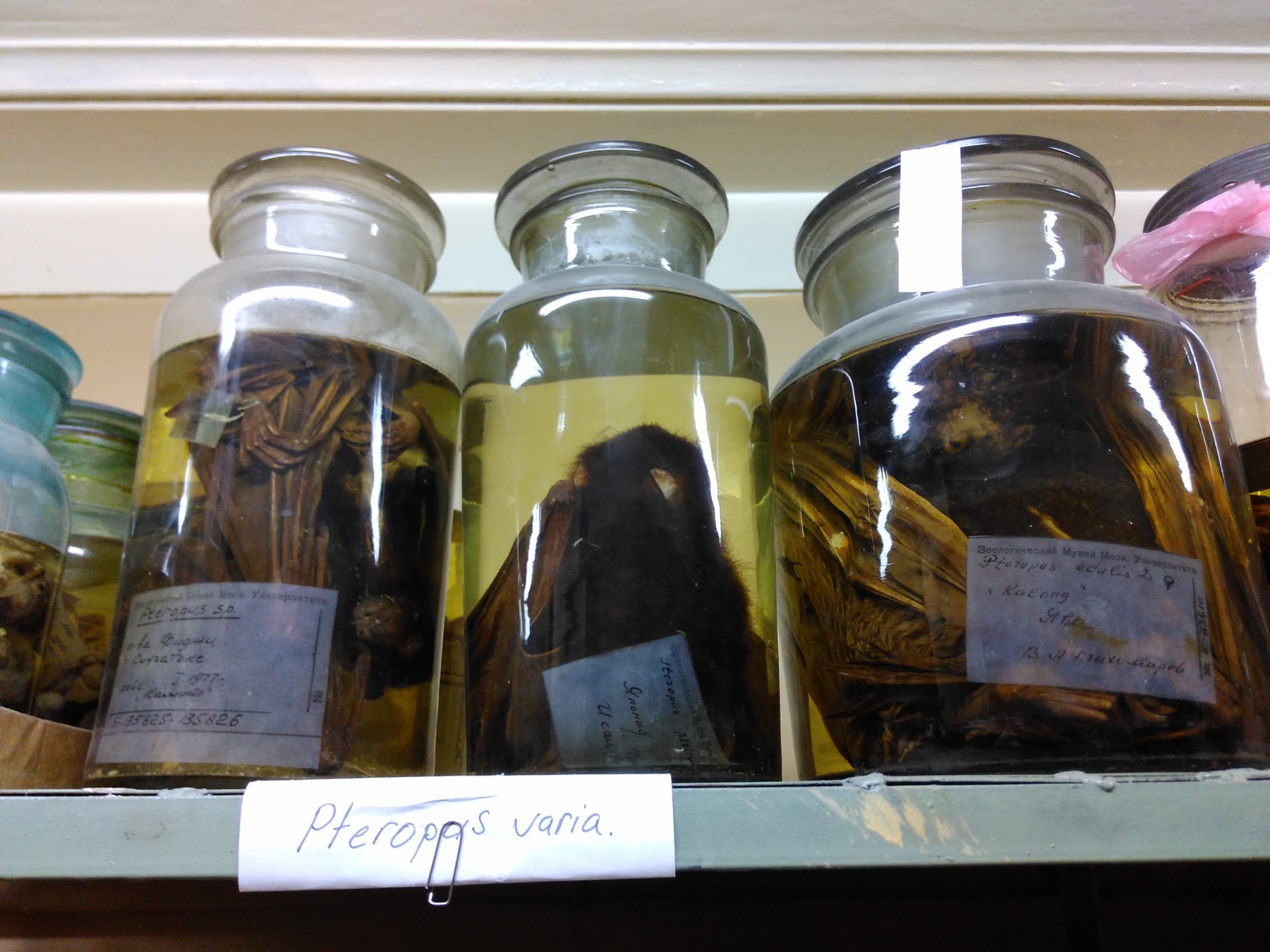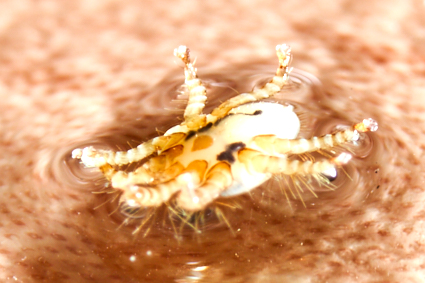Maria Vladimirovna Orlova, Candidate of Biological Sciences, staff member of the Laboratory for Monitoring Biodiversity of the TSU Biological Institute, is the only specialist in Russia who studies ectoparasites of bats. Ectoparasites, in particular, ticks live on the surface of the body of animals and humans and are often carriers of bacterial infections and viruses. In the summer of 2020, Maria Orlova managed to find an extremely rare tick species - Spinturnix scuticornis – under unusual conditions. The tick was removed from the Himalayan bat, which has spent the past 20 years in an alcohol solution at the Zoological Museum of Moscow State University.
Today we will talk about how such discoveries occur and why the results of such studies are extremely important both for the world and for Siberia, where every spring and summer season, residents face serious danger from an almost invisible enemy.
How did you manage to make your discovery?
Of course, most of the time we work with live material. Bats are a largely protected group, therefore, the collection of parasites from these animals is carried out in vivo: the bat is caught, fixed, the parasites are removed, and the bat is released. In cases when there is no live material (the species has died out) or if it did not work out to go to field work, as this year, one can examine the available alcohol-based material. The largest collection of such bats in Russia, as far as I know, is at Moscow State University. Unable to travel abroad, I went on a business trip to our Moscow colleagues. There were no guarantees that parasites would be found on long-dead animals. But there was hope that in the folds of the wings I could find tightly hooked parasites. I found "my" tick on an animal with the romantic name "Himalayan bat", which was once brought from Vietnam.

It turned out that such a mite was not recorded on the territory of this country, and it had been found only three times before in the entire history of the study of ectoparasites. Therefore, it is almost completely unexplored, its habitat is not known, the chain of its vectors and the main host are not clear.
How important are such discoveries and what makes this tick so special?
On the one hand, the discovery is useful, first of all, for the territory where the parasite was found. It clarifies the list of vectors, that is, arthropods that can carry a particular disease. The list of fauna, including species of parasites, is the basis for studying the potential bacteriological and viral danger that threatens the inhabitants of a given area. First, we must understand what inhabits the territory of the country, and only then study everything else. We are currently working on creating such a faunal list.

On the other hand, this year's experience has shown how important the research of local fauna is for all mankind: with open borders, especially when it comes to countries with a high tourist flow, a local problem can very quickly turn into a global threat. China has clearly demonstrated to us how a lack of knowledge can lead to global disaster. Southeast Asia contains a large number of territories that researchers have not "got their hands on" yet.
As for viral pathogens, to date, the possibility of their transmission by vectors (arthropods - ticks, fleas, etc.) is rather poorly studied. A very small number of viruses associated with bats’ ectoparasites have been described. Because of this, we cannot yet say how this group participates in the circulation of certain diseases. But it certainly does!
Could you describe how you study alcoholized ectoparasites?
If a tick has a thick shell, it needs to be soaked in alkali for several hours. After excess sclerotization vanishes, it is washed in a special solution. There, the tick gets much lighter, all internal organs  dissolve, and the external chitinous skeleton is clearly manifested. Further, the tick can be studied under a microscope and, by the configuration of the scutes, we can determine its species. If a tick does not match any existing description, it is acknowledged as a new species.
dissolve, and the external chitinous skeleton is clearly manifested. Further, the tick can be studied under a microscope and, by the configuration of the scutes, we can determine its species. If a tick does not match any existing description, it is acknowledged as a new species.
And how can you determine what disease it can carry?
For this, a tick cannot be placed in alkali, as its DNA will be destroyed, and we will not be able to find out what bacteria or viruses are contained inside. In this case, the tick must be given for the PCR procedure (polymer chain reaction), which helps to isolate the tick's DNA and identify what kind of infection it may contain. In the case of the Vietnamese specimen, this was not done, since we had only one tick, and the main goal was to determine its species. Now we know that there are representatives of Spinturnix scuticornis in Vietnam and further, in theory, we need to study the Vietnamese fauna and see what other species of this genus live there. It is necessary to catch several such ticks and try to get pathogens and viruses from them.
I expect to make a series of articles on Vietnam, and then I will either apply for a grant, or try to negotiate with the specialists who travel there so that they collect live material for further research.
TSU biologists are constantly studying something related to ticks. How does this help to solve the problem with them on our territory?
Here you need to understand that not all ticks are enemies of humanity. The parasitic mites that threaten us are far fewer than those that are useful. For example, soil mites are microscopic ticks, and without them we would not have normal soil. They are essential components of the ecosystem. And if we organize a global fight against ticks, we will destroy them too. That is why it is necessary to study ectoparasites in detail in order to fight them pointwise.
The most effective way to combat ticks has always been and still remains spraying with acaricides. However, there is an effect of "fighting between armor and a projectile": people develop new acaricides, and ticks adapt to them. But the more we know about these parasites, the more effective the new spray systems will be.
In general, fighting a group of someone that is significantly outnumbered is a completely useless activity. It is necessary not to destroy ticks, but to learn how to coexist with them. This is the only thing that people can do. Ticks are alternatively highly developed creatures, they lived long before humans and will clearly outlive him, no doubt about it. Another question is that the more we know about them, the better we can coexist.

Editorial Board
